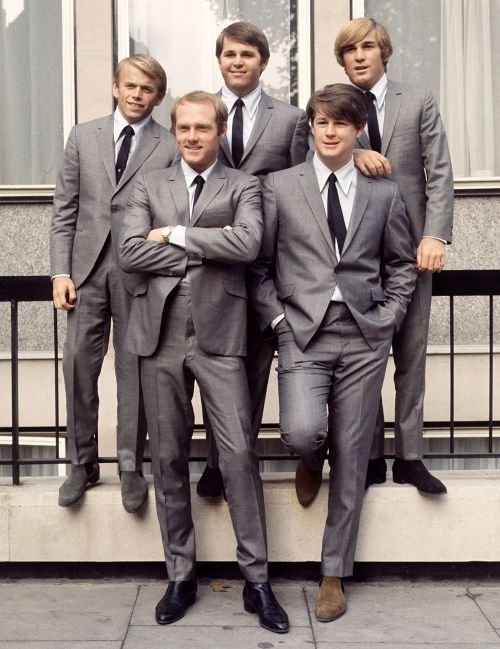FEATURE:
Needle Drop
PHOTO CREDIT: cottonbro studio/Pexels
Why Is Music So Underused When It Comes to Creating Memorable Cinematic Moments?
__________
MAYBE it is because…
PHOTO CREDIT: Luis Quintero/Pexels
music clearance is so expensive and hard to get, cinema is not as synonymous with its big musical moments as it used to be. There is this great thing in films where you get needle drops. Songs perfectly deployed at great moments. Music very much scoring some incredible scenes. I have discussed this before. I am probably thinking more about title sequences. Over the past decade or so, how many truly memorable title scenes have there been? Ones where music is very much at the core? So many films do not take the time to craft something ambitious and distinct. In terms of music in general, obviously it is used in film and you get great soundtracks. Scenes that are soundtracked by incredible songs. However, there were periods in cinema where music was much more integral. Think of some of the best films ever and how they use music. It is tricky getting music cleared and it can take up a lot of budget. However, I think been thinking about the best opening sequences and credits ever are largely in the past. Very few films from the past decade or so make the list and particular use music powerfully when opening a film. I really don’t think it is the case that every song would cost a lot of money to put on the screen. I have been thinking of some different scenarios. I have pitched before a dazzling opening scene of a film set in the late-Disco era. One where we’d open on a dazzling dance sequence set in New York that has this fusion of Disco tracks and songs from the likes of ABBA and Fleetwood Mac. It would be this colourful, inclusive and dazzling opening that, whilst complicated and maybe expensive to stage, would use music wonderfully and effectively.
I have also been thinking of an opening sequence to a film set to Nightmare on Wax’s Les Nuit. Something set at night that immerses us in a cityscape and the sleepiness and quiet. Something distinct because of the way it is shot and the techniques used, it would rely on the power of that song. Another would be a stark and frank opening credit where we see a cycle of domestic abuse behind closed doors, scored by The Temptations’ Get Ready. That juxtaposition in terms of the mood of the song and the scenes playing out. It would be shocking and hopefully rank alongside the best opening credits in terms of its power. Another that would build an organic city soundtrack. Sounds of the streets, building into a crescendo in those one-track trip of a city. The sound layers would then disappear one by one until it is quiet. Another sequence, which I have discussed before, set to an original song that takes influence from director Michel Gondry. Ideas for films and opening credits based on music. How these particular tracks and sounds would elevate the cinema. How much is hugely powerful when it comes to provoking imagination and ambition. I do not see it much with modern films. The art of the iconic opening credits long gone. Maybe fewer standout cinema moments where music is key. I do wonder what is causing this and whether music is as important. Reviews of films not really picking up on scenes where music and cinema perfectly intertwined.
Maybe T.V. is more effective and prolific when it comes to marrying music and visuals. I can’t recall the last film I saw when there was a perfect needle drop or even a decent opening sequence. Films so keen just to get down to things and, if they do spend time with the opening credits, it is so ordinary and boring. I don’t buy that there is very little budget to push things. Like an album, you need to hook people from the opening track. If you start off with a very boring or unengaging song then the attention span for the rest of the album will probably wane. I feel the same relates to film. Music can be so instrumental (no pun intended) when it comes to crafting and birthing majestic and timeless film scenes. As I mentioned, I have ideas for films and opening credits because of the music. The visuals form around them. The entire film can then grow from there. A single song can project scenes, characters and inspire an entire film. I am thinking of films in recent memory where we associate a scene with a particular song. Maybe the use of Sophie Ellis-Bextor’s Murder on the Dancefloor from Saltburn. Apart from that, I am really reaching to think of examples where music has realty helped define a scene. I don’t know whether music is too difficult to clear or it is hard to pair a song with a scene to create that brilliant cinematic moment. I feel music is undervalued and underused. Perhaps there are too many obstacles and too much cost involved. However, there has been a distinct absence of perfect music-cinema occasions that rank alongside the best ever. Especially the all-time best credit sequences. I hope that this is not going to the case for the future. The power of music in cinema has been established and is clear. I hope that more filmmakers…
DROP the needle.



















































